Nikon’s new D850 full-frame camera is proving to be one of their most popular cameras ever, and what’s not to like? A massive 46MP sensor with resolution that matches or exceeds film, fast autofocus (AF) borrowed from the pro-level D5, low base 64 ISO to better capture bright scenes and a fast 7 fps frame rate with an electronic front curtain shutter, for just a start.  Matching that are improved flash electronics, TTL protocols and 4K video. For those D800 and D810 underwater photographers who fell in love with shooting full-frame images, the upgrade is intriguing.
Matching that are improved flash electronics, TTL protocols and 4K video. For those D800 and D810 underwater photographers who fell in love with shooting full-frame images, the upgrade is intriguing.
I’ve shot many different cameras underwater, from small compacts and several Olympus mirrorless models, to other Nikon DX DSLRs. The Nikon D500 (review here), certainly is one of my favorites. Snappy performance and incredible low-light focusing make it ideal for many underwater photographers, especially for macro and black water. But I really fell head over heels in love with the incredible dynamic range of the full-frame D800. (See comparison article.) As slow and heavy as it was, it still solidly cranked out some amazing shots. But the technology and electronic features of these cameras changes quickly and I was ready for a faster, newer generation.
Heard, but Not Seen?
The new Nikon D850 FX camera hit the streets last fall, and while everyone has been waiting impatiently, due to its popularity and Nikon’s low production levels, most would-be buyers haven’t been able to find one. In a rare event, housings were available almost immediately. For my first trip to Fiji in December with the D850 it meant that I had to rent a body.
I use LensRentals.com a lot for these sorts of situations, as it’s a great way to “try before you buy” for cameras and lenses. By the time we left for my second trip to Yap and Palau this spring, I was able to buy a D850 body. Between the two trips, I now have around 60 dives on the new D850 and Nauticam housing system, and love it!
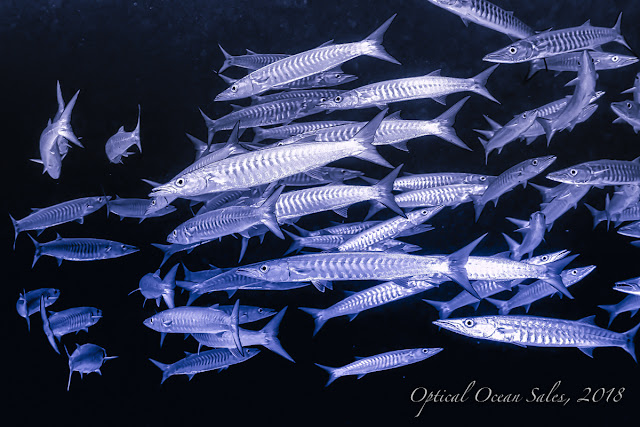
It’s Just Zippy
The D850 really is a different beast, owing more to the pro level D5 than anything else. It’s much faster all the way around – AF, electronic shutter, frame rate, buffer and processor. Just zippy. While the D800 felt and acted much more like a film camera, the D850 is much more modern in every respect. It feels a lot more like a cross with the mirrorless cameras in that way. There are also a lot of new features, such as a swiveling touch screen, that are very nice to use above water. Nikon also swapped the position of the ISO and Mode buttons, which was a great idea, as I tend to change ISO constantly when shooting an FX camera.
 It does have several function buttons and custom settings, but they are not as programmable as the Olympus E-M1 MKII. That said, there are plenty of functions available to make your life easier underwater. For instance, assigning the flash sync setting to F2 allows you to switch from TTL to manual (by using 1/250th sec FP) when using the Nauticam Technics TTL board in the housing. I also assigned the “My Menu” selection to F1, which gives you fast access to the first item on the list.
It does have several function buttons and custom settings, but they are not as programmable as the Olympus E-M1 MKII. That said, there are plenty of functions available to make your life easier underwater. For instance, assigning the flash sync setting to F2 allows you to switch from TTL to manual (by using 1/250th sec FP) when using the Nauticam Technics TTL board in the housing. I also assigned the “My Menu” selection to F1, which gives you fast access to the first item on the list.
Lens Quality & Calibration
The image quality (IQ) of the D850 is tremendous, but I struggled a bit to get the focus just right on my first trip to Fiji. It seemed to back focus a bit and trying to catch a single focus spot wasn’t always successful. I found that the uber-high resolution D850 requires the AF to be closely calibrated with lenses, as it less forgiving of lens quality and focus than other models.
 Fortunately, most Nikons allow you to add a precise calibration adjustment to the camera for each of your lenses. I found that even with my wide angle Sigma 15mm FE lens, with a huge depth of field, a couple of small adjustments made a big difference in picture quality. Although Nikon has an automatic calibration routine to do this, I couldn’t get it to work consistently, and ended up using an old school set-up of shooting a ruler at a 45° angle.
Fortunately, most Nikons allow you to add a precise calibration adjustment to the camera for each of your lenses. I found that even with my wide angle Sigma 15mm FE lens, with a huge depth of field, a couple of small adjustments made a big difference in picture quality. Although Nikon has an automatic calibration routine to do this, I couldn’t get it to work consistently, and ended up using an old school set-up of shooting a ruler at a 45° angle.
Released at the same time, Nikon’s new 8-15mm FE lens seems to be the go-to lens for close focus wide angle shots, but after I got the Sigma calibrated, I found it shot very well on the D850 and is quite a bit less expensive. I shot it behind a Zen 170mm dome, which yields excellent corners and quality. Nauticam's 140mm FE dome has also been optimized for these lenses and is slightly smaller with a removable shade.
A popular configuration of the Sigma 15mm FE and the Kenko 1.4 teleconverter didn't work out well. The depth of field was extremely small, so trying to do a "wide angle macro" shot resulted in unpleasing out of focus foreground and backgrounds with only the center of the image in focus. The exceptional resolution of the camera doesn't allow for much leeway.
For a mid-range zoom, I’ve used a 17-35mm lens for quite a while as I like it’s f/2.8 speed. On the D800, I could cheat a little and use the smaller 170mm dome if I cropped the corners of the photos.
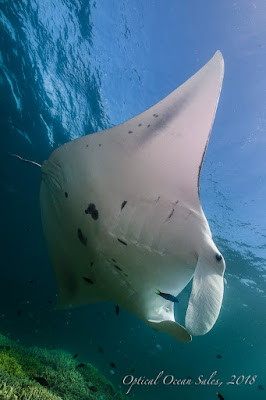 Not so on the D850. Not surprisingly IQ was terrible with the smaller dome. For these mid-range zoom lenses, you have to use a large glass dome port – I used the Saga Dive 230mm (9”) dome along with a 70mm extension and zoom gear.
Not so on the D850. Not surprisingly IQ was terrible with the smaller dome. For these mid-range zoom lenses, you have to use a large glass dome port – I used the Saga Dive 230mm (9”) dome along with a 70mm extension and zoom gear.
To further improve quality, I also used an internal Sea & Sea M77 Correction Filter to reduce distortion and soft corners even more. This is a little discussed piece of gear, but really improves these mid-range lenses. I felt the images turned out great with this combo. I actually liked diving with the larger dome port, it balanced the rig out and improved camera handling, and even in the higher currents found in Palau, I didn’t find its size to be an issue.
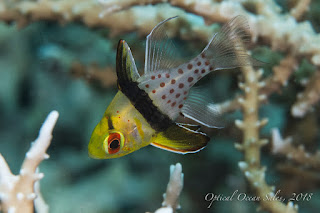 For macro, I use the standard Nikon AF-S 105mm VR macro lens for most situations. In Palau I tried shooting my Nikon 60mm Micro lens in order to gain reach while shooting sharks and big animals that were shy. I tried this lens behind my 170mm dome with an extension, and it turned out great - as long as the visibility was good, as you are stacking up water. I really liked the versatility of being able to grab shots of shy sharks, small schools of fish, and macro shots with this one set-up, and used it quite often.
For macro, I use the standard Nikon AF-S 105mm VR macro lens for most situations. In Palau I tried shooting my Nikon 60mm Micro lens in order to gain reach while shooting sharks and big animals that were shy. I tried this lens behind my 170mm dome with an extension, and it turned out great - as long as the visibility was good, as you are stacking up water. I really liked the versatility of being able to grab shots of shy sharks, small schools of fish, and macro shots with this one set-up, and used it quite often.
Focusing In
A lot has been written about the D850’s AF speed and modes. Several photographers suggested using the camera in AF-C (continuous focus) mode, rather than AF-S (single focus) mode. I’m old school, and most of the times I try to dumb these cameras down to a single spot with AF-S focus mode. The D850 is one of the first cameras where I liked to shoot in group AF (other than macro) and with AF-C (continuous focus) activated. I hardly ever had an out-of-focus shot. It definitely is also fast to focus and worked well in low light situations. However, in my experience it’s a bit slower in low-light than the D500, but not by much.

Swing Low
As one might expect, the D850, like most FX cameras has just tremendous low-light capabilities and you can easily shoot at ISO 2000 or above with no issues. Coupled with it's much improved AF, it makes shooting in caves, or dark situations easily achievable with just available light. This is another one of the really great improvements it has over the older D800/D810 models.
Battery life is good, as you are no longer using a pop-up flash to trigger your strobes. With a fast 128GB XQD card installed, I did 4 dives or more without needing to change batteries or cards.
Live View shooting is much faster. Gone are the long delays, and at times I found it useful, although I like the bright optical viewfinder much better.
Video
I did shoot a bit of video. The camera has been improved to shoot in 4K, with many nice on-screen controls, like focus peaking. Whole sets of video controls can be set up and accessed at the flip of a switch.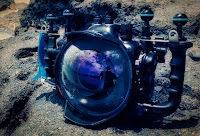
Nauticam NA-D850 Housing
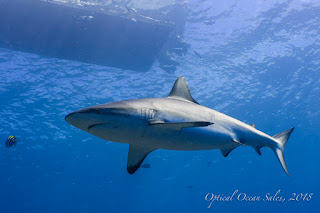 I also found many nice improvements and differences between the Nauticam NA-D850 the older NA-D800 underwater housings. Having used many Nauticam housings over the years, it’s great to see continuous improvement from model to model.
I also found many nice improvements and differences between the Nauticam NA-D850 the older NA-D800 underwater housings. Having used many Nauticam housings over the years, it’s great to see continuous improvement from model to model.
Not surprisingly, the new D850 housing is shorter than the D800 model, as there is no pop-up flash or tall “bell” to hold it. The width of the housing is about the same.
The biggest surprise to me was the weight difference – one full pound lighter! While all housings can be made to be more neutral underwater with the addition of floats, the mass remains the same. Swimming one less pound of mass around makes quite a difference in handling.
I was using two Sea & Sea strobes and shot a lot in TTL on both trips. However, I almost always shoot larger animals and other wide-angle in manual, as these situations don’t reflect enough light to the camera to adjust TTL triggering very well.
The newer Nauticam Nikon housings now use electronic Technics LED trigger boards that take up very little room, a manual version comes standard. I found the optional Nauticam TTL board and found it to be quite accurate – better than what I was used to when I had used the D800’s onboard flash. I could also adjust the ev on the strobes accurately. I normally shoot with +.3 ev dialed in, as I almost always want a bit more light, and this gives the strobes a better TTL range.
For the most part, the TTL board was very accurate and determined good exposure. However, I found it vastly under exposed shots with too much contrast across the frame, such as an overhang with soft coral and a bright sky behind it. Switching to manual strobe control in those situations worked fine, and with the function button set up I could switch the strobes from TTL to manual, or even off/on, with a press of a button.
The rest of the controls on the Nauticam housing are designed with ergonomics in mind. Having produced housings since the Nikon D90, Nauticam has it figured out. They are all easy to reach and adjust, and fall right under your fingers, although I’d probably vote for the ISO lever to be a little bit more prominent; sometimes I couldn’t quite find it without looking.
As the D850 camera has a flip-up viewscreen, Nauticam matched that with a mounting tray that tilts the viewscreen to 15°, making it much easier to view.
Standard features include the famous rotating port bayonet lock and vacuum check system – now with a push button valve with a front reset button. These make diving much less stressful when taking such an expensive camera underwater.
There are a few important options that I would add to the housing. An external viewfinder (I use a 180°), to take advantage of the extremely large/bright optical viewfinder on the D850, the Technics TTL board, two housing ball mounts for lights, and a carrying handle along with a hand strap for a secure, one-handed grip).
Time to Upgrade?
So, is it worthwhile to upgrade from a Nikon D800 or D810 to this new beast - the D850? I struggled with this, as these FX systems are expensive, but my verdict is a decided yes.
The D850 camera is much faster, shoots easier, and has improved functionality with just plain incredible IQ all the way around. I like it much better than the D800, both above and below the water.
The new Nauticam housing adds even more to the mix; smaller, much lighter, with improved controls, electronic strobe capabilities, and vacuum leak check systems. The combination is extremely powerful.
The secondary market for used D800/D810s is remaining reasonably strong, so an upgrader can expect to outlay less than they think after all is done.
I feel the Nikon D850 is the upgrade that everyone has been waiting for and will redefine this pro-level camera market segment.
Trip Photos:
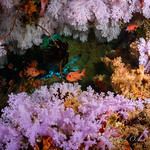 |
| Fiji Trip Photos |
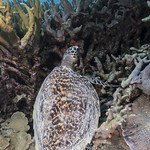 |
| Yap Trip Photos |
 |
| Palau Trip Photos |



